Fifty years in the past this June, Washington hosted its first official Pleasure. Held in entrance of the gay-and-lesbian bookstore Lambda Rising, the occasion was each celebration and assertion. In a photograph from the day, the shop’s founder holds a DC Council “Homosexual Pleasure Day” proclamation whereas a council member appears on. Standing close by is famous activist Frank Kameny, a Harvard-trained astronomer whose lifelong campaign started when he was fired from his federal job for being homosexual.
Within the nation’s capital, neither politics nor tradition sits downstream from the opposite. The 2 swirl and movement collectively, via a authorities that displays the nation and shapes it. Among the many queerest of American cities culturally, DC can also be the epicenter of so many battles over LGBTQ+ rights. Whereas Senator Joseph McCarthy was ranting about “perverts” within the State Division, homosexual Black males discovered security on the Nob Hill bar only a few miles away. Whereas President Reagan struggled to say “homosexual” in his uncommon statements on the AIDS disaster, locals kicked off the beloved annual Excessive Heel Race. Whereas President Trump promised to finish Kennedy Middle “drag reveals focusing on our youth,” protesters marched in gender-fluid, Technicolor fashion.
Our metropolis has been dwelling to the Lavender Scare and America’s first recognized drag queen; police assaults on homosexual males and ACT UP protests on the White Home; transgender military-service bans and Congresswoman Sarah McBride, the primary brazenly trans Home member. We embody the contradictions and conflicts—and the change. Because the world joins us to have a good time a half century of Pleasure, it’s time to look again on the place we’ve been, the higher to see the place we’d go subsequent.
-
1896
Again to PrimeAn Unspeakable Offense
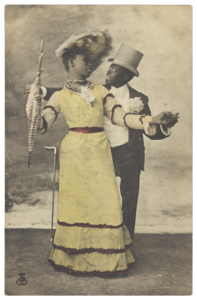
{Photograph} courtesy of James Gardiner Assortment/Wellcome Library. In March 1896, the US lawyer common for DC weighed in on a clemency petition for a prisoner sentenced to 300 days in jail, nominally for operating a brothel: “Whereas the cost of retaining a disorderly home doesn’t on its face differ from different instances through which milder sentences have been imposed, the prisoner was in actual fact convicted of one of the crucial horrible and disgusting offences recognized to the legislation; an offence so disgusting that it’s unnamed.”
This unspeakable offense was virtually definitely drag. The prisoner, William Dorsey Swann, born into slavery in Hancock, Maryland, was a bunch of drag balls, attended by a big, mixed-race group of males in DC. “They almost all had on low neck and quick sleeve silk attire, a number of of them with trains,” wrote the Washington Critic in 1887, describing an earlier police raid on a ball attended by Swann. One other article known as Swann a ball’s “queen,” an epithet he additionally adopted, turning into historical past’s first self-described drag queen. As soon as, in line with creator Channing Joseph, Swann was stated to have charged on the police in protection of his group—an act later echoed at New York Metropolis’s Stonewall Inn and in different occasions and locations.
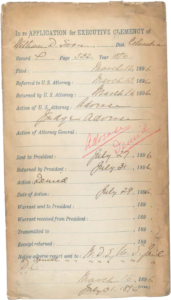

{Photograph} courtesy of Nationwide Archives. Swann held a robust public fame via a number of arrests. His clemency petition (beneath), in the end rejected by President Grover Cleveland, was signed by 30 supporters and described him as a “hard-working and industrious man” employed by Common William Dudley, an necessary official in put up–Civil Warfare Washington. Swann’s twin existence could be acquainted to many queer Washingtonians earlier than and since—significantly drag artists, who’ve lengthy ping-ponged between acceptance and backlash.
On the time of Swann’s events, drag—loosely outlined as a theatrical efficiency of a gender one wasn’t born into—was shifting from a preferred vaudeville act to an artwork kind loved by well-heeled straight audiences, significantly in the course of the “pansy craze” of the Nineteen Twenties and ’30s. The Jewel Field Revue, an built-in all-drag troupe that traveled the world within the Nineteen Forties and ’50s, at one level did a stint on the upscale DC dinner theater On line casino Royal. Native artists held on via police crackdowns on homosexual males within the Nineteen Fifties, and by the Nineteen Sixties and ’70s, there was a thriving scene of drag homes and common balls. Through the AIDS disaster, the group supported the ; by the Nineteen Nineties, DC was internet hosting some 40 reveals weekly. As drag once more faces backlash, artists might take braveness from Swann’s story.
-
Again to Prime
A statue of Prussian common Friedrich Wilhelm von Steuben is unveiled in Lafayette Park, a longtime cruising floor for the town’s homosexual males. Believed to have been homosexual, von Steuben fought with the Individuals within the Revolutionary Warfare. That very same yr, DC additionally erects a statue of Casimir Pulaski, a Polish Revolutionary Warfare common believed to have been intersex.
-
Again to Prime
At 1461 S Road, NW, poet, playwright, and anti-lynching activist Georgia Douglas Johnson hosts Saturday-night salons for lots of the queer Black luminaries of the Harlem Renaissance, together with Langston Hughes, Angelina Weld Grimké, Richard Bruce Nugent, and Alain Locke.
-
Again to Prime
The Lavender Scare
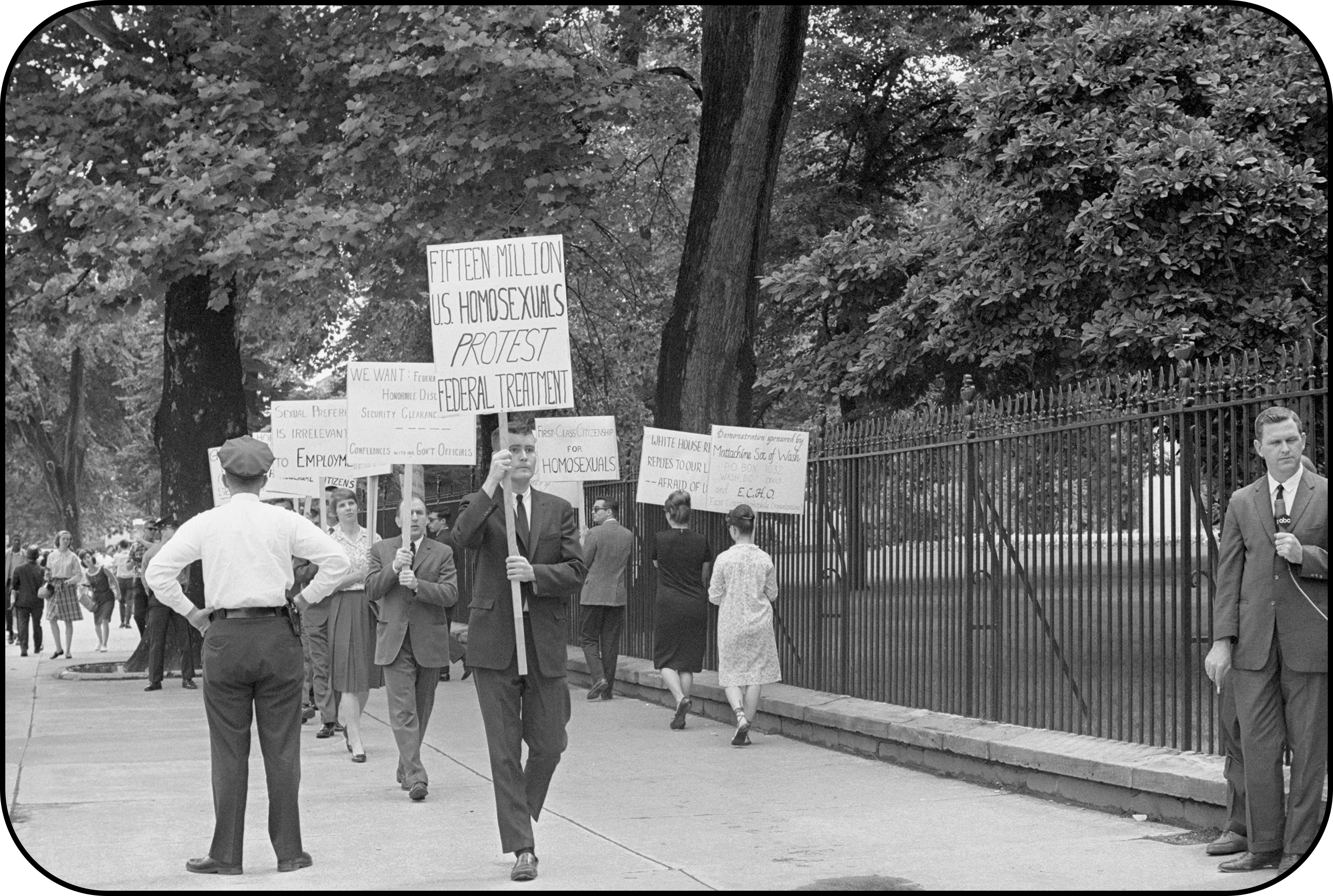

{Photograph} by Bettmann Archive/Getty Photos. In February 1950, Senator Joseph McCarthy bragged about having a listing of Communists working for the State Division—two of them homosexual males. That very same month, a State Division official instructed the Senate that he had lately fired 91 staff for being homosexual. The official rationale was that gays have been a “safety threat” and weak to blackmail. However there was additionally clear revulsion—gays have been seen as limp-wristed, opposite to nature and God, one way or the other simply improper. Republican senator Kenneth Wherry requested, “Are you able to consider an individual who might be extra harmful to the USA of America than a pervert?”
Politicians in search of simple scapegoats whipped this prejudice right into a mass witch hunt, with Wherry co-leading an investigation to root out gays in authorities and President Eisenhower signing a 1953 govt order that barred anybody with “sexual perversions” from federal employment. Aided by his deputy Roy Cohn and FBI head J. Edgar Hoover, McCarthy launched an anti-gay purge whose results are nonetheless felt at this time. (Notably, all three males have been themselves dogged by homosexual rumors. Cohn, an ineffectively closeted homosexual man, would later die of AIDS.)
Though “safety threat” firings petered out over time, Eisenhower’s ban wasn’t formally lifted till the Nineteen Nineties. At the very least 5,000 queer folks, largely homosexual males, misplaced their jobs, and an unknown quantity have been unable to serve within the first place. Being fired as a “safety threat” additionally meant being outed to the broader group, typically with shattering outcomes: Some focused federal staff misplaced their households, whereas others dedicated suicide.
In a twist McCarthy by no means dreamed of, the purge fed instantly into the beginning of the fashionable gay-rights motion. Frank Kameny, a navy veteran and Harvard PhD in astronomy who was employed in 1957 by the Military Map Service, misplaced his job following accusations of gay habits. Refusing to depart in disgrace, he appealed his firing and took his case to the Supreme Courtroom, which declined to listen to it. Kameny then based the DC department of the Mattachine Society, which in 1965 organized the primary gay-rights protest in District historical past. Ten women and men—together with Lilli Vincenz, cofounder of the newspaper that grew to become the Washington Blade—marched in entrance of the White Home, demanding the top of the federal ban.
The protests unfold to different cities, and Kameny grew to become one of the crucial revered homosexual activists within the nation. A lot of his objectives—together with an finish to anti-sodomy legal guidelines and the removing of homosexuality from the Diagnostic and Statistical Handbook of Psychological Problems, or DSM—took years to attain. However his defiance laid the groundwork for a extra tolerant future.
-


{Photograph} by Rainbow Historical past Undertaking Digital Collections. Nob Hill, one of many longest-operating homosexual bars within the nation (at this time the location of Wonderland Ballroom) opens. Initially a non-public social membership that can turn out to be a bar in 1957 and keep in enterprise till 2004, it largely serves African American males, together with Howard College college students.
-
Again to Prime
In accordance with the Rainbow Historical past Undertaking, Alan Kress, a drag queen performing underneath the identify Liz Taylor, organizes the nation’s first yearly scheduled drag competitors, the Academy Awards of Washington. The Academy—as it’ll turn out to be recognized after Hollywood’s Academy Awards threatens to sue—later makes use of its fundraising clout to assist drag artists affected by the AIDS disaster.
-
Again to Prime
This Daring Home


{Photograph} by JEB (Joan E. Biren). Many DC group-house residents have believed they’d change the world—however the Furies Collective, based mostly at 219 eleventh Road, Southeast, from 1971 to ’72, really did. One in every of many communal-living experiments in Nineteen Seventies Washington, the Furies have been a bunch of 12 lesbian feminists, all radicals with intensive organizing backgrounds, plus three youngsters and a cat named Child Jesus. They shared every thing, slept on an assemblage of mattresses on the ground, led political-theory workshops, taught mechanics lessons to ladies, and revealed an everyday newspaper, the Furies, which was offered at ladies’s bookstores throughout the nation. “We’re dedicated to ending all oppressions by attacking their roots—male supremacy,” they wrote within the first problem.
On the time, the nascent feminist motion wasn’t welcoming to queer ladies. Nationwide Group for Girl president Betty Friedan referred to a “lavender menace,” and a few feared that associating with lesbians would undermine the motion’s credibility by making feminists seem like “man-haters.” In protest, a bunch known as the Radicalesbians led a quick hijacking of the NOW-led Second Congress to Unite Girls in 1970, carrying T-shirts that learn “Lavender Menace” and demanding that NOW embrace lesbians. Rita Mae Brown, who later grew to become a bestselling novelist and creator of the lesbian traditional Rubyfruit Jungle, was one of many protest’s architects and a key determine within the Furies Collective.
Whereas the Furies lasted solely 18 months earlier than splintering, their affect endures. Members grew to become teachers, writers, political organizers, and publishers. The concepts superior of their journal stay related, from the correct position of males (and, for some modern-day radical feminists, transgender ladies) in ladies’s areas to the connection of feminism to broader social struggles round sexuality, gender, race, and sophistication. Maybe most necessary, the group confirmed queer ladies that it was attainable not solely to dream of a greater world but additionally to create one collectively. As Brown wrote in her memoir, the collective “alerted different homosexual ladies to the shattering data that they weren’t alone.”
-
Again to Prime
Deacon Maccubin, founding father of Lambda Rising bookstore in Dupont Circle, holds DC’s first annual Pleasure occasion, the Homosexual Pleasure Social gathering, impressed by the parades in New York Metropolis that adopted the Stonewall riots of 1969.
-
Again to Prime
Whitman-Walker Clinic—an LGBTQ+ well being nonprofit named for queer poet Walt Whitman and Dr. Mary Edwards Walker, a Nineteenth-century abolitionist and surgeon who most well-liked male apparel—is included. Whitman-Walker will later be on the entrance line of the HIV/AIDS epidemic in DC, offering companies together with testing, therapy, housing, and authorized assist.
-
Again to Prime
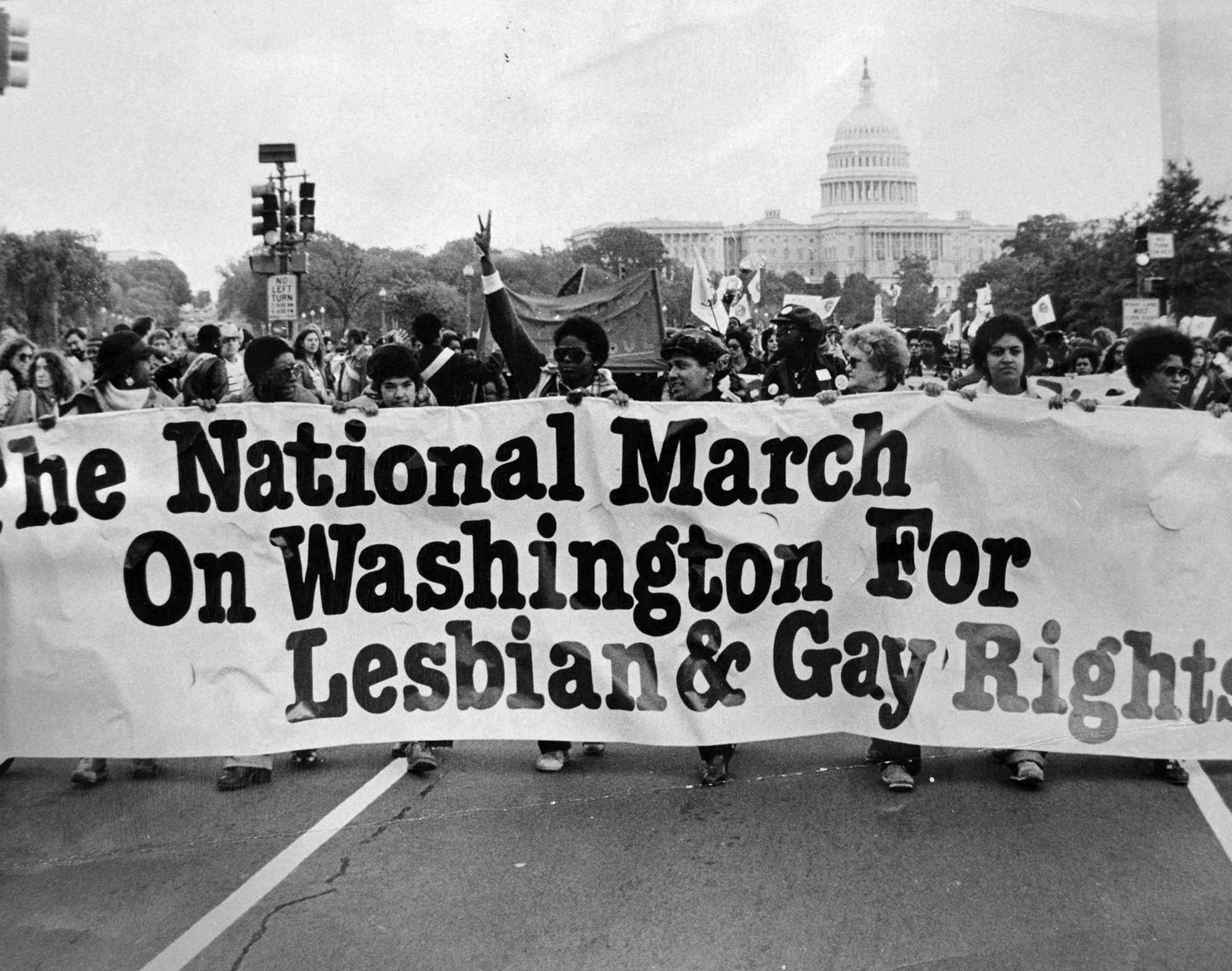

{Photograph} by AP Photos. The primary Nationwide March on Washington for Lesbian and Homosexual Rights options some 100,000 individuals—led by a bunch of lesbians of coloration known as the Salsa Soul Sisters—marching previous the White Home to the Nationwide Mall and shouting, “We’re all over the place!” Three extra marches can be held in 1987 (when the AIDS Memorial Quilt is first exhibited on the Mall), 1993, and 2000.
-
Again to Prime
Resting in Energy
Whereas many gays within the navy have been forcibly outed, Leonard Matlovich, an Air Power technical sergeant and Purple Coronary heart recipient, was the primary one recognized to out himself in protest—working in collaboration with the American Civil Liberties Union and activist Frank Kameny and, in 1975, showing on the duvet of Time journal. Through the authorized battle over his ensuing discharge, Matlovich lived throughout from the historic Congressional Cemetery in Southeast DC and was happy to be taught that Peter Doyle, believed to be Walt Whitman’s lover, was buried there. (So was Alain Locke, the homosexual “dean of the Harlem Renaissance,” who frequented Georgia Douglas Johnson’s salons.) Matlovich purchased a double plot within the cemetery just a few toes away from the graves of J. Edgar Hoover and his longtime deputy and rumored lover, Clyde Tolson. “It was type of a center finger to Hoover,” the cemetery’s president, Paul Williams, instructed the Washington Submit in 2021.
Matlovich died of AIDS in 1988, having designed his personal Congressional Cemetery gravestone in a remaining gesture of defiance. The textual content reads, “Once I was within the navy they gave me a medal for killing two males and a discharge for loving one,” subsequent to 2 pink triangles, one upside-down: the Nazi image for homosexuals, reappropriated in its inverted kind as a logo of queer resistance. Over time, Matlovich’s grave has turn out to be a pilgrimage website: {Couples} have married there, and plenty of different outstanding LGBTQ+ figures, together with seminal lesbian activists Barbara Gittings and Kay Lahusen, are buried close by in what’s now generally known as the “homosexual nook”—proper subsequent to Hoover and Tolson. A memorial tribute to Kameny sits close to Matlovich’s grave, inscribed with the slogan “Homosexual is Good.”
-
JR’s Bar and Grill in Dupont Circle holds the first-ever Excessive Heel Race, with 25 drag queens racing to Annie’s Paramount Steakhouse and again. In 1991, the race is canceled after neighbors complain. The group gathers anyway, and police make arrests and beat them with nightsticks. The race has solely grown since then, and it’s now a significant annual occasion sponsored by the town.
-
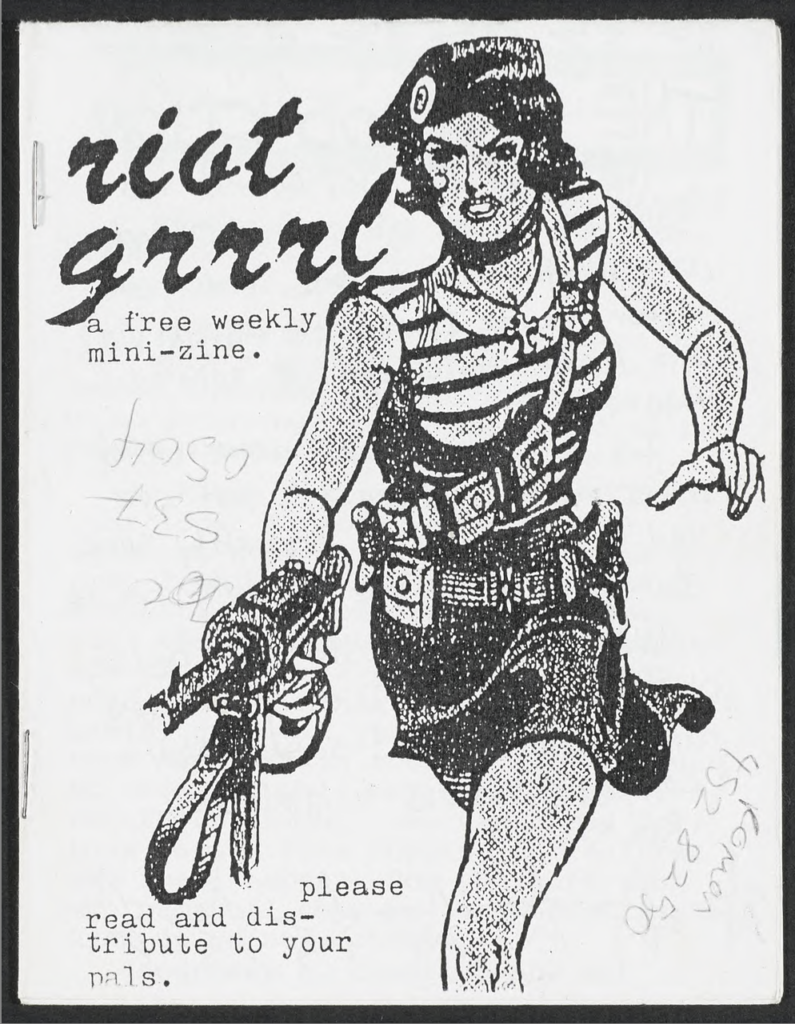

{Photograph} courtesy of Library of Congress. The primary problem of Riot Grrrl, a punk zine that can assist kick off a queer-friendly feminist motion, is revealed by a crew of girls understanding of a bunch home in Mount Nice.
-
Again to Prime
Appearing Up
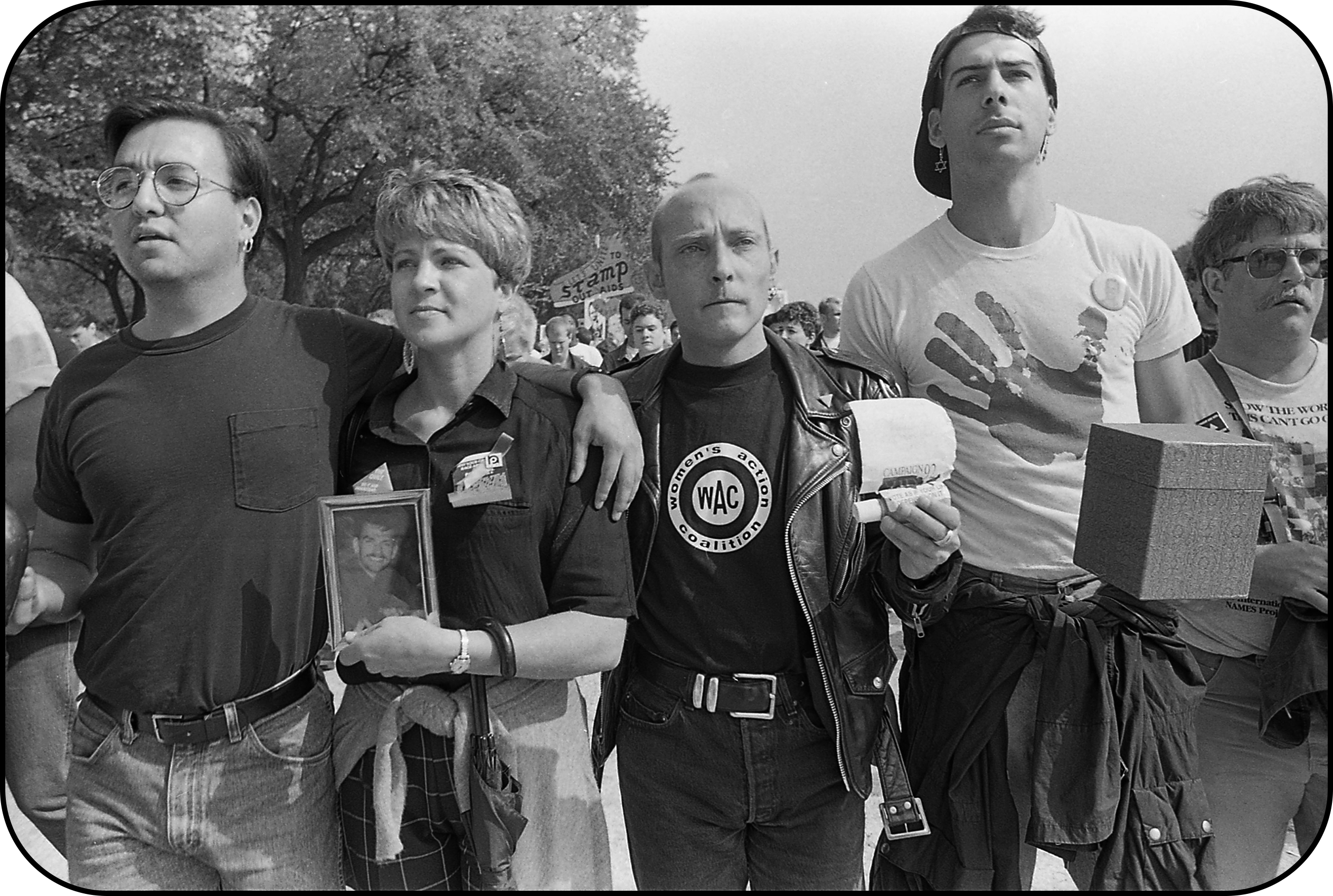

{Photograph} by Meg Handler. ACT UP (AIDS Coalition to Unleash Energy) protesters threw ashes of family members who had died of AIDS over the White Home fence in an effort to attract consideration to the continued plight of AIDS sufferers. “When you gained’t come to the funeral,” one demonstrator stated about President George H.W. Bush, “we’ll convey the funeral to you.”
-
Again to Prime
President Clinton indicators into legislation “Don’t Ask, Don’t Inform,” permitting gays and lesbians to serve within the armed forces, offered they don’t show “a propensity or intent to have interaction in gay acts.” Three years later, he indicators the Protection of Marriage Act, defining marriage as current between a person and a lady. The 2 legal guidelines are ultimately defeated in 2011 and 2013.
-
Again to Prime
When Tyra Hunter, a Black trans girl, will get right into a automobile accident in Southeast DC, paramedics on the scene ignore and mock her, failing to supply therapy that might save her life. Hunter’s loss of life ignites protests and a more in-depth consideration to how emergency-service staff reply to transgender sufferers.
-
Again to Prime
Republican David Catania is sworn in because the DC Council’s first brazenly homosexual member. He later leaves the Republican Social gathering over its try and amend the Structure to ban homosexual marriage.
-
Again to Prime
Freed Love


{Photograph} by Jeff Malet. On June 26, 2015, the Supreme Courtroom’s resolution within the case of Obergefell v. Hodges formally legalized same-sex marriage in the USA—catching the nation as much as DC, the place it had been authorized since late 2009. Underneath rainbow flags and balloons, queer {couples} and their households and supporters cheered, wept, and kissed on the steps of the courtroom, whereas that evening President Obama illuminated the White Home in rainbow colours. Throughout the Washington space and elsewhere, {couples} who in some instances had been collectively for many years and typically shared youngsters and even grandchildren have been lastly free to train a proper that had lengthy been unthinkable.
-
Again to Prime
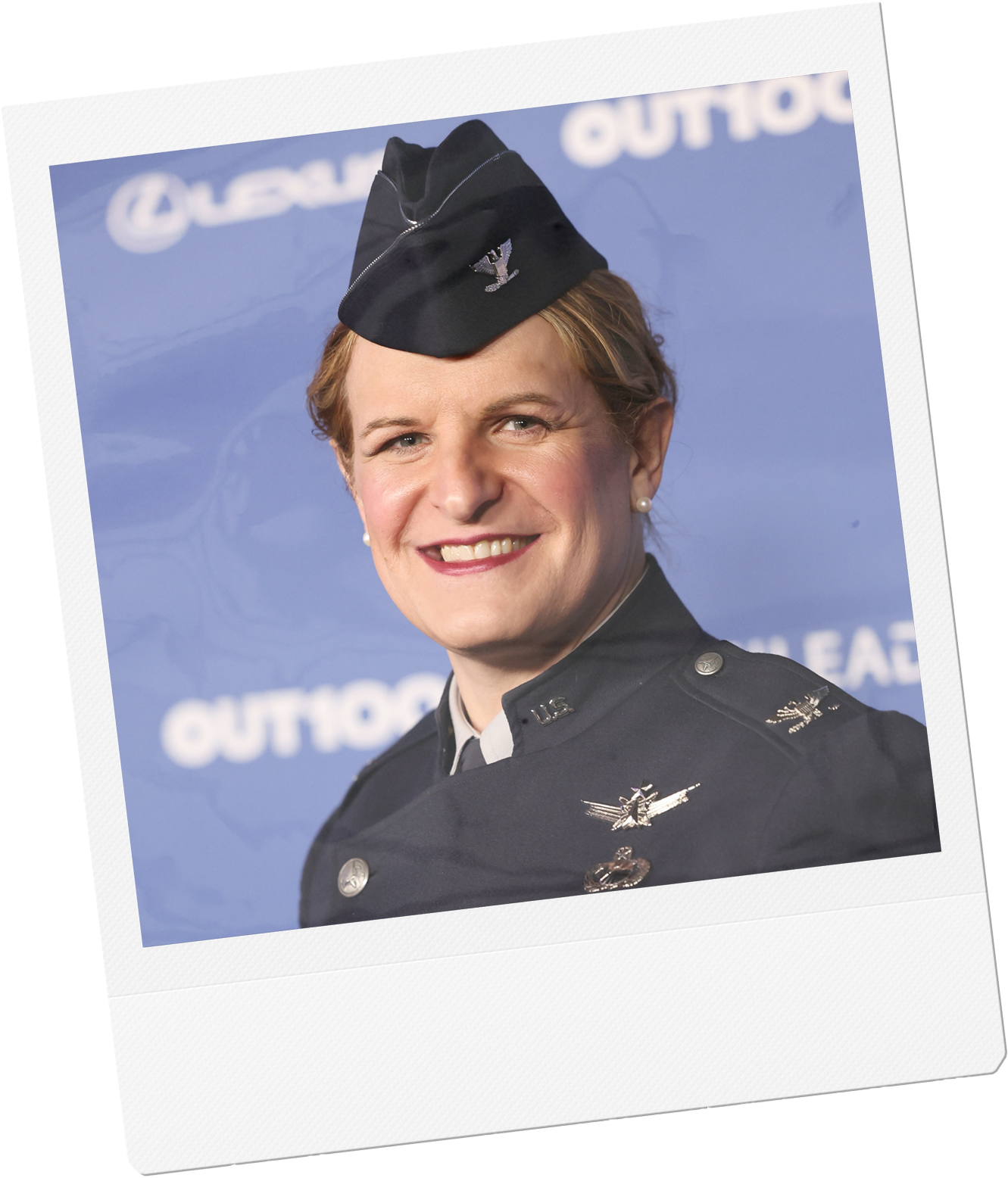

{Photograph} by Amy Sussman/Getty Photos. The Pentagon permits transgender folks to serve brazenly within the navy. Bree Fram (left), an Air Power officer working within the Pentagon, comes out as trans the identical day. President Trump will reverse the coverage in 2019; Biden will reinstate it in 2021; Trump will reverse it but once more in 2025.
-
Again to Prime
Part One, DC’s longest-running lesbian bar, closes its doorways throughout a time when gentrification and rising prices have precipitated many LGBTQ+ institutions to shutter. Open since 1970, Part One was the ultimate survivor of the “Homosexual Means,” a strip on Eighth Road, Southeast, that was close to the Furies Collective home and had been dwelling to quite a few homosexual and lesbian bars for the reason that late Nineteen Sixties.
-
Again to Prime
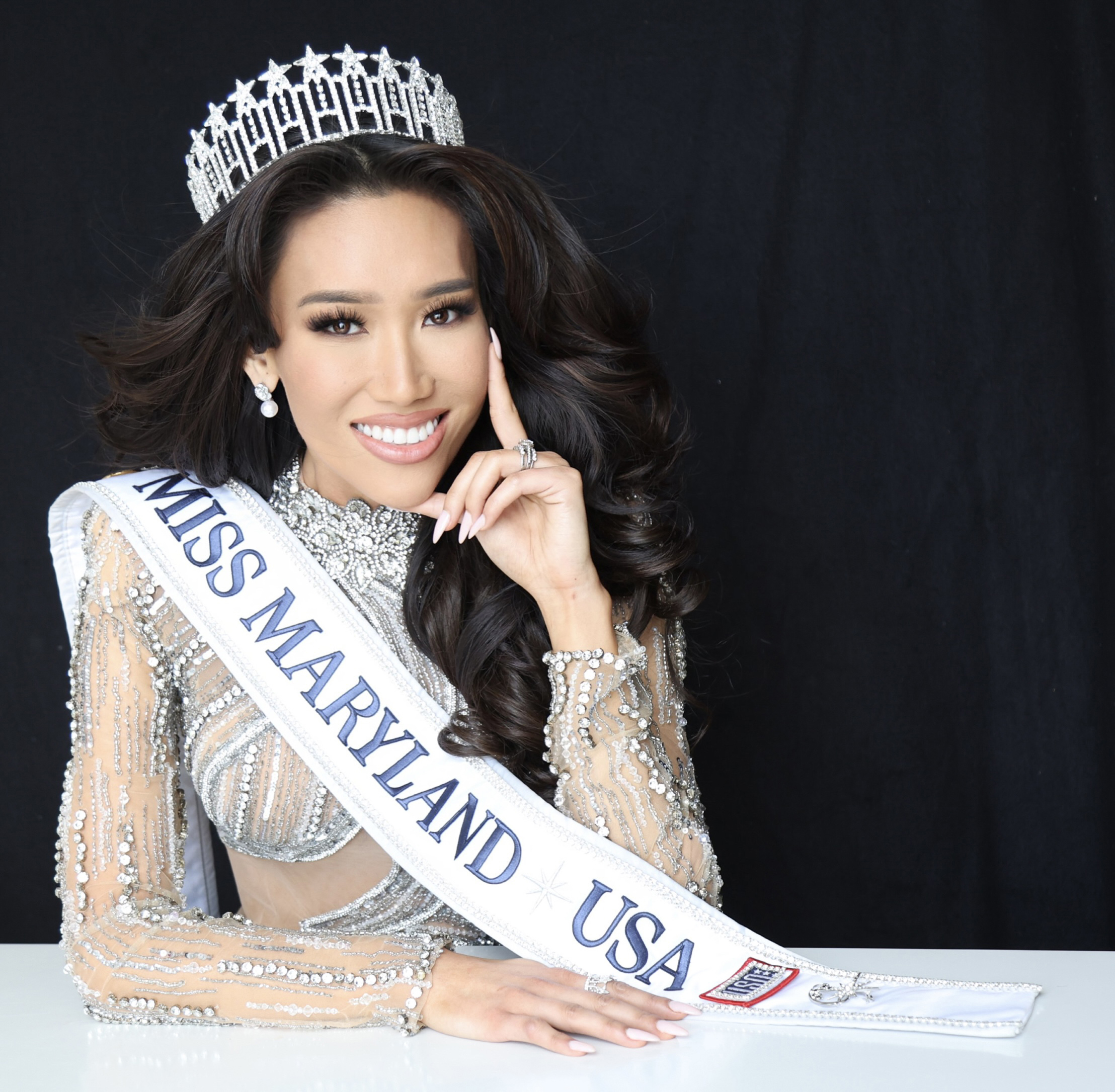

{Photograph} by Fadil Berisha. Bailey Anne turns into the first-ever transgender Miss Maryland USA and solely the second transgender contestant within the Miss USA competitors.
On March 8, 2025, LGBTQ+ teams involved over the Trump administration’s assaults on drag artists—and queer folks usually—staged a “March for Drag” that culminated on the Kennedy Middle. “This night as we stroll down the streets of our capital metropolis, we’re strolling within the footsteps of our queer ancestors who fought tooth and nail for each proper that we’ve got ever attained,” stated drag activist Sister Sybil Liberties.
-
Again to Prime
Marching Onward
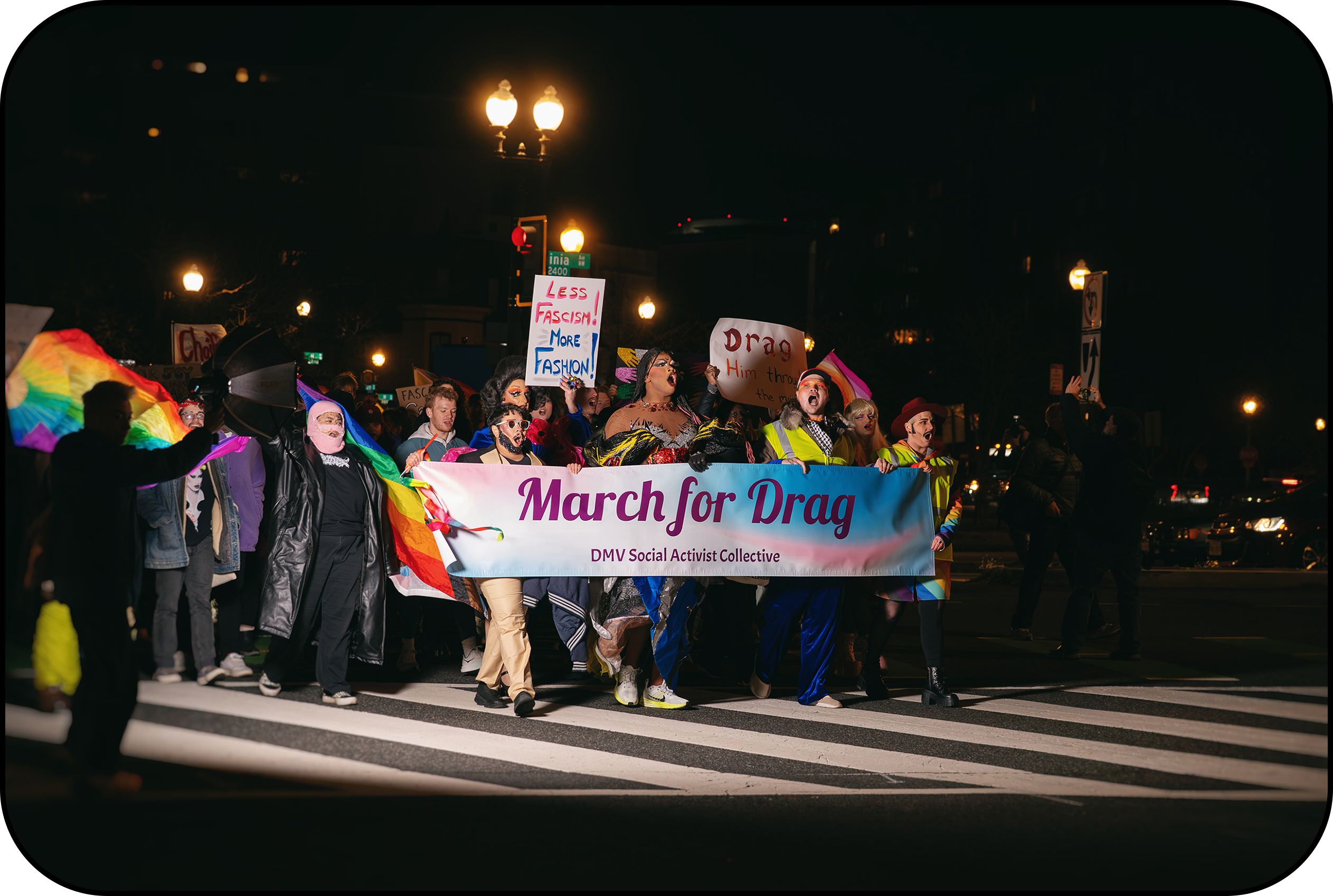

{Photograph} by DuHon Pictures. LGBTQ+ teams involved over the Trump administration’s assaults on drag artists—and queer folks usually—staged a “March for Drag” that culminated on the Kennedy Middle. “This night as we stroll down the streets of our capital metropolis, we’re strolling within the footsteps of our queer ancestors who fought tooth and nail for each proper that we’ve got ever attained,” stated drag activist Sister Sybil Liberties.
This text seems within the June 2025 problem of Washingtonian.

